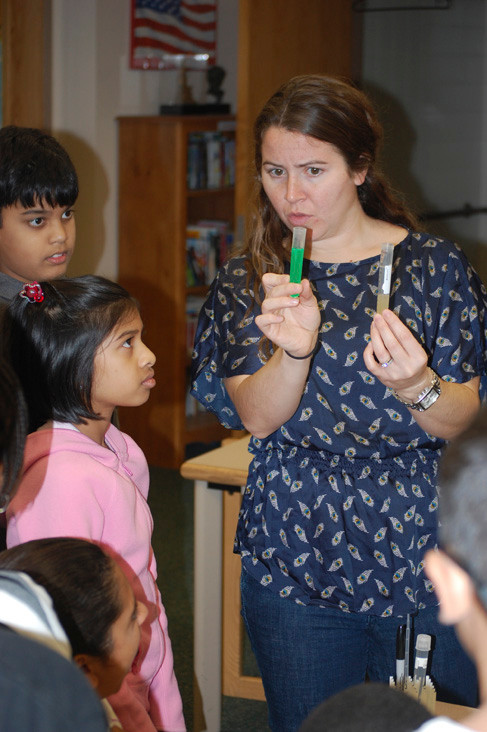Young scientists study genetics at Howell Road
Fifth-grade students at Howell Road School became scientists last week, participating in a DNA extraction lab. The school’s library became their laboratory on Nov. 21, as children learned about a component of every living thing.
The experiment was led by Jennifer Galasso from the Cold Spring Harbor Laboratory, a non-profit scientific research institution on Long Island’s north shore. While classes often visit the lab, sometime the lab comes to the classes.
Students got to extract the DNA in bacteria. Galasso noted that 95 percent of bacteria is actually good — it’s the 5 percent that makes people sick that gives it a bad name, she explained. Because bacteria is really small, billions of cells can fit in a small test tube.
For their experiment, students began by adding soap to the bacteria. Galasso explained that the soap helps break open the fatty cell membranes so the DNA comes out. The children then shook their test tube and put it in a hot water bath for 15 minutes. After adding ethanol, which kept the DNA from dissolving, the students used a small hook to take out the DNA, look at it and touch it.
“I thought it was really cool,” said fifth-grader Randy Kublalo. “We got to see DNA. Not a lot of people can go home and say ‘I saw DNA.’”
The experiment was part of a series of educational programs in District 13 for American Education Week. Fifth-grade teacher Noele Villa said she got a grant from Bank of America to bring the program to Howell Road.
Villa said that there is a life processes unit in the fifth-grade science curriculum, which includes learning abut DNA. She explained that the DNA extraction lab was the next best thing to an actual visit to the Cold Spring Harbor lab fro students. “What they really know about DNA is what they see on crime shows,” she said, “so I wanted to make it as real as possible for them. This is a hard unit to teach.”
It was definitely real for student Selena Barnes. “I got to see cells,” she said. “I actually felt them. I always thought cells were so small, I’d only be able to see them through a microscope.”
That’s normally true, Galasso explained, but when billions of cells are grouped together, a microscope isn’t necessary.











